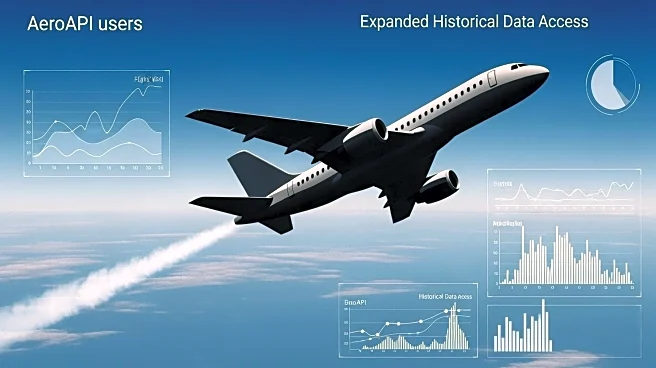What's Happening?
FlightAware has announced an expansion of its AeroAPI service, allowing users to access historical flight data dating back to 2011. This development provides customers with the ability to view and analyze extensive flight information, enhancing their
operational capabilities. The service aims to support various stakeholders in the aviation industry, including airlines, airports, and aviation service providers, by offering detailed insights into flight patterns and trends over a significant period.
Why It's Important?
The expansion of historical data access by FlightAware is significant for the aviation industry as it enables better decision-making and strategic planning. Airlines and airports can leverage this data to optimize operations, improve safety measures, and enhance customer service. Additionally, aviation service providers can use the data to develop more efficient solutions and services. The availability of long-term data can also aid in research and development efforts, potentially leading to innovations in flight operations and management.
What's Next?
With the expanded data access, stakeholders in the aviation industry are likely to explore new opportunities for utilizing historical flight data. Airlines may implement more sophisticated analytics to improve route planning and fuel efficiency. Airports could enhance their traffic management systems, while aviation service providers might develop new tools and services based on the insights gained from the data. The industry may also see increased collaboration among stakeholders to maximize the benefits of the expanded data access.
Beyond the Headlines
The availability of historical flight data raises questions about data privacy and security. As more entities access and analyze this data, ensuring the protection of sensitive information becomes crucial. Additionally, the expanded data access could lead to increased competition among aviation service providers, as they strive to offer more advanced solutions based on the insights derived from the data.













